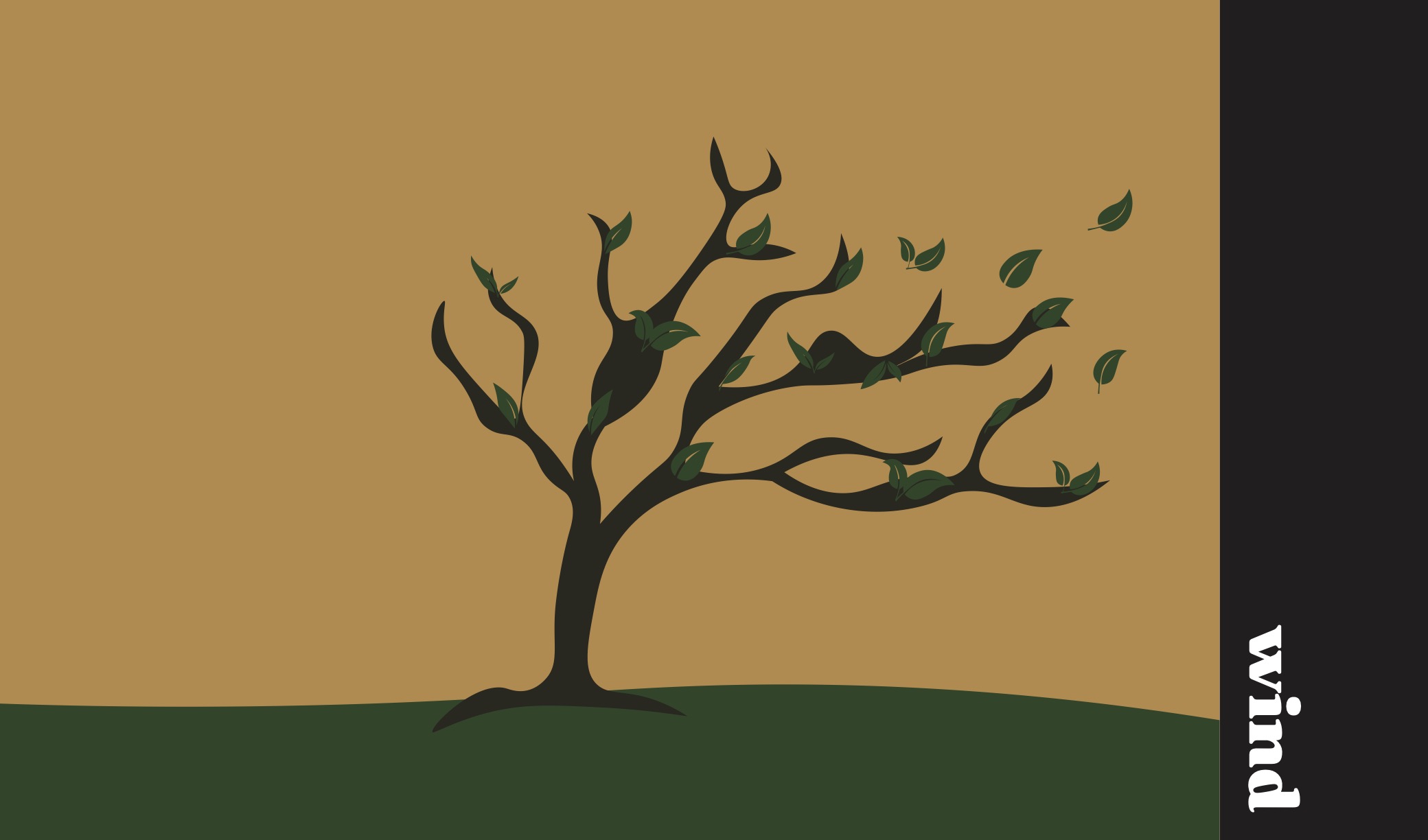The Best Patio Furniture for Different Weather Conditions
Every spring and summer, retailers across the US start gearing up to sell brand new outdoor furniture for every type of patio and poolside you can imagine. But what type of outdoor furniture material is best for your location and climate?
To answer this question, we’ve curated a list of popular outdoor materials and cataloged their strengths, weaknesses, and the weather conditions they’re best suited for so you can find out exactly what you need to know!
The Causes of Weather-Related Damage
In today’s world, there are many new outdoor furniture materials that are making it easier to bring the comfort of indoor furniture to the great outdoors - but, this doesn’t mean you should take home the first high-end outdoor set that you see. Remember, it’s almost impossible to create a material that’s completely impervious to life in the elements. Mother Nature is still the #1 concern in the life of outside furniture, and it pays to understand just how damaging different weather effects can be.
When left outside, furniture is exposed to a variety of conditions, but the primary sources of concern when it comes to weather-related damage are moisture, sunlight, extreme temperatures, and wind.

Moisture
Moisture refers to obvious weather conditions like rain and snow, but it can also refer to more subtle dangers like humidity and salty coastal air.
Moisture can cause metal to rust, wood to warp and rot, and it can cause fabrics to break down or develop mold and mildew.

Sunlight
While it makes outdoor living enjoyable, sunlight can actually be quite harmful to certain outdoor materials.
Specifically, the ultra-violet rays in sunlight can cause the colors applied to outdoor finishing materials and outdoor fabrics to fade significantly.

Extreme Temperatures
Extreme temperatures can also be harmful to outdoor furniture. Most materials expand and contract when they are heated or cooled, and some materials are better at dealing with this process than others.
Materials that are not able to withstand extreme temperatures can crack, split, or become brittle. Other materials can develop high surface temperatures and become uncomfortable or painful to the touch.

Wind
Wind is the most easily understood of the harmful weather conditions. While moving air doesn’t harm furniture as it passes by, strong winds are a problem for lightweight outdoor pieces as they are easily blown over or carried away.
Additionally, strong winds can carry things like branches which can damage to softer outdoor materials
The Best Outdoor Furniture Materials For Every Type of Weather
With so much to think about, finding the right outdoor material at the right price can really be a headache. But, that’s why we’re here! The expertly-curated list below provides information on modern and traditional outdoor materials that are all likely to be found at your favorite furniture store, so you only have to focus on finding the right product for your space and budget.

Metals have always been highly sought after when it comes to designing high quality outdoor furniture due to their exceptional strength and durability. While metals are generally well suited for life in the great outdoors, not all metals are created equal.
*this list contains accurate information regarding the intrinsic strengths and weaknesses of various metals. As mentioned above, there are a variety of new, modern finishing techniques currently available that can remove these weaknesses to a large extent. The most prevalent of these finishes is called “powder coating” which is far superior to paint and can make many metals significantly more resistant to water and rust.
Iron
Iron is silver-gray metal that is quite durable and heavy. Even though it is exceptionally strong, iron has been shaped into intricate designs for centuries, which is why many iron pieces today convey a stately traditional aesthetic.
Strengths: Heavy, long-lasting, not easily damaged
Weaknesses: Rusts easily unless treated, difficult to move, surface temperatures can become extreme
Preferred Climates: Ideal for areas with high wind and occasional storms, also great for sunny, temperate locations. Not ideal for rainy or coastal areas with salty air, and can be problematic in places with extreme heat.

Is iron good for outdoor furniture?
Iron, sometimes called "wrought iron" or "cast iron", has been used to create beautiful outdoor furniture for centuries. It is highly durable and perfect for windy climates because the metal itself is heavy and denser than most other materials found outside. The problem with iron furniture is that it rusts easily and can be difficult to move around. Iron can withstand extreme temperatures without being damaged, but it also retains temperatures easily and can often become too hot or cold to the touch depending on where you live. Because of its hardness and ability to retain extreme temperatures, wrought iron pieces usually require some sort of fabric cushioning to make sure they are comfortable in all seasons.
Aluminum
Aluminum is a lightweight, relatively malleable metal with a silvery-white color. Because it’s lightweight, maneuverable, and still very strong, aluminum is a prized metal when it comes to outdoor furniture.
Strengths: Durable, inexpensive, resists rust, and easy-to-clean
Weaknesses: Can be too lightweight for certain areas, surface temperatures can become extreme
Preferred climate: Ideal for rainy, sunny, and temperate climates. Not ideal for areas with strong winds.

Is aluminum good for outdoor furniture?
Aluminum is currently the most commonly used metal in outdoor furniture frames because of its many intrinsic qualities. As mentioned, aluminum is lightweight, highly durable, and it resists rust and moisture damage better than most other metals. On top of this, aluminum is inexpensive and easy to work with which makes it highly desirable to manufacturers and consumers alike. While it’s easy to transport, the one real problem with aluminum is that it is so lightweight that it tends to blow over in the presence of high winds. Also, like other metals, the surface of aluminum products tends to become hot or cold easily, and it can become uncomfortable if not covered by shade or some sort of fabric cushioning.
Stainless Steel
Stainless steel displays a brighter silver color compared to traditional steel, and it is also extremely resistant to corrosion, stains, and rust. Because of these qualities, stainless steel is a very popular furniture material.
Strengths: Highly durable, exceptional rust-resistance, easy-to-clean, often made from recycled materials
Weaknesses: Expensive, surface temperatures can become too extreme
Preferred Climate: Ideal for rainy, sunny, and windy climates.

Is stainless steel good for outdoor furniture?
Heavier than aluminum but lighter than wrought iron, stainless steel is a fantastic option for a variety of weather conditions. Steel is extremely dense, durable, and almost dent-proof; and it is the most rust-resistant metal on the market. Stainless steel is easy to clean, offers a sleek modern look, and it is often made from recycled materials. Like other metals, stainless steel can become too hot or cold to the touch in certain conditions, but the only real drawback to stainless steel is that it is one of the most expensive metals on the market.

Wood has been a beloved material in the world of outdoor furniture for years because it’s easy to work with and beautiful in any setting. That being said, wood is also subject it's fair share of negative weather effects.
These negative effects are primarily caused by water damage and changing temperatures, and they include things like warping, cracking, fading, and rotting. Most of these effects can be mitigated through use of finishes, stains, and sealants - but that doesn’t mean that every type of wood is ideal for life in the great outdoors.
While there are a plethora of types of wood available to furniture producers, they are often divided into two categories based on which species of tree they come from: hardwood and softwood.
Hardwood
Hardwood a term for any wood created from broad-leafed trees, with well known examples like walnut, beech, mahogany, maple and oak. Unlike softwood, hardwood trees produce a more complex wood structure that promotes superior durability.
Strengths: Strong, long-lasting, relatively water-resistant, able to withstand extreme temperatures
Weaknesses: Difficult to work with, hard to paint, expensive
Preferred Climate: Ideal for rainy, sunny and windy areas, as well as for climates with extreme temperatures

Is hardwood good for outdoor furniture?
Hardwood comes from deciduous trees called Angiosperms. Angiosperms grow slowly which makes them more expensive, and the wood they produce is dense, close-grained, and has a high oil content. Broadly speaking, hardwood can be seen as a natural fit in the outdoor furniture world because it's strong, long-lasting, water-resistant, and able to deal with changing temperatures without warping or cracking. Because of its density and oil content, hardwood is not able to be painted well, although they can accept certain finishes to make them even more weather-resistant. Some notable examples of high quality-outdoor hardwood are teak, shorea, acacia, and ipe.
Softwood
Softwood is wood that is sourced from conifers, such as pine, fir, or spruce. Softwood is typically less dense and lighter in weight than hardwood, and many varieties of softwood are used in commercial construction, paper production, and furniture.
Strengths: Easy to work with, take finishes easily and beautifully, inexpensive, eco-friendly when compared to hardwoods
Weaknesses: Poor longevity, prone to water damage unless properly sealed, can be too lightweight for certain areas
Preferred Climate: Ideal for temperate, dry, and sunny areas. Not ideal for windy or rainy climates

Is softwood good for outdoor furniture?
Conifers grow quickly and are generally less dense than hardwood trees, which makes their wood less durable, but this same quality makes softwood easier to work with and more environmentally-friendly. Softwood is more prone to weather damage, but it's better able to absorb weather-resistant finishes. It is commonly believed that softwood is better suited to indoor environments, but most softwood can be used outdoors so long as it's treated to resist moisture. Some notable examples of high-quality outdoor softwood trees are cedar, cypress, and redwood.

Man-made synthetic materials, such as plastics and resins, are typically lightweight, inexpensive, and able to take on a variety of unique shapes and colors. On top of this, synthetics are virtually impervious to water damage, and they are naturally fade-resistant because their color isn’t applied externally, it’s part of the composition of the material itself.
Now more than ever, advanced manufacturing processes and the discovery of new hybrid compositions are enabling furniture makers to create truly unique and head-turning pieces using these modern materials.
Polyethylene
Strengths: Inexpensive, water-resistant, fade-resistant
Weaknesses: Most brittle synthetic material, can be too lightweight for certain areas
Preferred Climate: Ideal for sunny, rainy, and temperate areas. Not ideal for windy and stormy climates.

Is Polyethylene good for outdoor furniture?
In the past, most outdoor deck furniture was made Polyethylene(PE). Polyethylene furniture is inexpensive, but is relatively brittle compared to other types of synthetics, which makes it more prone to weather damage unless it’s made with the high-density version of polyethylene (HDPE). Like other plastics, Polyethylene is fade-resistant, lightweight, and able to take on a variety of unique shapes.
Recycled Plastic
Recycled plastic is a hybrid plastic which is made from recycled milk cartons, shampoo bottles, and other plastic consumer goods.
Strengths: Durable, eco-friendly, water-resistant, fade-resistant, can withstand extreme temperatures, and inexpensive
Weaknesses: Can be too lightweight for certain areas
Preferred Climate: Ideal for sunny, rainy, and temperate areas. Not ideal for windy climates.

Is Recycled plastic good for outdoor furniture?
Recycled plastic furniture is one of the best rated outdoor furniture materials In both style and performance. This is because it’s extraordinarily strong, extremely durable, and, like all plastics, it’s impervious to moisture, rotting, salt water, and stains. One of recycled plastic’s best qualities is that it’s usually made to resemble wood with high accuracy while requiring none of the care and maintenance that real wood does - plus it’s environmentally-friendly!
Synthetic Resin
Synthetic resin a term for polyethylene resin that's made to look like natural wicker. Synthetic resin is used to make almost all of today’s outdoor wicker furniture.
Strengths: Fade-resistant, impervious to water damage, can withstand extreme temperatures without discomfort
Weaknesses: Can be too lightweight for certain areas
Preferred Climate: Ideal for sunny, rainy, and temperate areas. Not ideal for windy climates.

Is synthetic resin good for outdoor furniture?
There are a few varieties of synthetic resin wicker, and most of them share the same qualities. Synthetic wicker delivers all of the traditional good looks of plant-based wicker, but with almost none of the downsides. Synthetic resins are extremely weather-resistant, and almost all of the high quality varieties come with fade-resistant UV protection.
Like other plastics, the main drawback of synthetic resin wicker is that it is too lightweight for windy climates, although this can be mitigated if it is wound around a heavy enough frame.

Because natural fabrics are well known to be ill-suited to outdoor environments, almost all of the fabrics used to create contemporary outdoor furnishings are synthetic. Although they may be marketed under different brand names, almost all synthetic outdoor fabrics seen today are made of acrylic, olefin, or polyester fibers.
Additionally, when it comes to synthetic outdoor fabrics, it’s important to understand that they are all actually quite robust when it comes to strength, flexibility, and moisture management, which refers to their ability to resist water and dry quickly. Because of this, synthetic outdoor fabrics are suitable for both dry and rainy climates. The most important quality to consider when looking at synthetic fabrics is lightfastness, the fabric’s ability to resist fading when exposed to UV light, followed by stain-resistance and feel.
Acrylic
Strengths: Highly durable, exceptional lightfastness, water-resistant, comfortable
Weaknesses: Expensive and stains fairly easily
Are acrylic fabrics good for outdoor furniture?
Currently, acrylic fabrics are the best all-around fabrics for outdoor furniture. They stand up to wear-and-tear; they’re water resistant; mold and mildew resistant; and they offer premium UV protection for color that doesn’t fade season after season. Acrylic fabrics are also breathable and soft to the touch, making them ideal for a range of upholstered outdoor furnishings.
Although they are generally easy to care for, acrylic fabrics can be relatively easy to stain when not treated with a stain treatment bath. All in all, the only real problem with acrylic outdoor fabrics is that they are the most expensive fabric listed.
Olefin
Strengths: Inexpensive, highly durable, exceptional lightfastness, water-resistant, stain-resistant
Weaknesses: Not as soft to the touch as other outdoor fabrics
Are olefin fabrics good for outdoor furniture?
Olefin fabrics are also an amazing option for outdoor spaces. Olefin is a byproduct of refining petroleum, and olefin fabrics offer roughly the same strength, durability, and water-resistance, as acrylic fabrics. Importantly, olefin fabrics are also just as fade-proof as acrylic fabrics, but they are significantly less expensive. To top it off, olefin fabrics are the most stain-resistant of all of the fabrics listed.
Although they’re breathable and smooth, the biggest drawback of olefin fabrics is that they are generally not as soft as acrylic or polyester fabrics. With that being said, olefin fabrics are incredibly robust outdoor materials, and they are highly recommended, especially if acrylic is outside of your price range.
Polyester
Strengths: Affordable, soft touch, water-resistant, strong
Weaknesses: Poor lightfastness
Are polyester fabrics good for outdoor furniture?
Polyester is last on many people’s list when it comes to outdoor fabrics because it is known to fade. That being said, polyester is an extremely strong, flexible, and water-resistant material. Because of the way that it is dyed, polyester is able to be mass produced with bright colors and prints, but these colors will fade much faster than those found on acrylic and olefin fabrics.
Not to be completely overlooked, polyester is extremely affordable and it’s one of the softest outdoor fabrics on the market. Because of these factors, our experts believe that polyester is best suited for outdoor throw pillows, blankets, and other similar products intended for seasonal use.
Now that you have a firm grasp on which materials make the most sense for your local climate, you’re ready to get out there and design the outdoor space of your dreams, rain or shine.
Don’t forget - our new and improved Furniture Glossary has tons of helpful information about furniture. Learn more about all the types of wood and types of metal used in furniture construction in the General Construction Terms section, or discover your favorite style in the Furniture & Design Styles section!